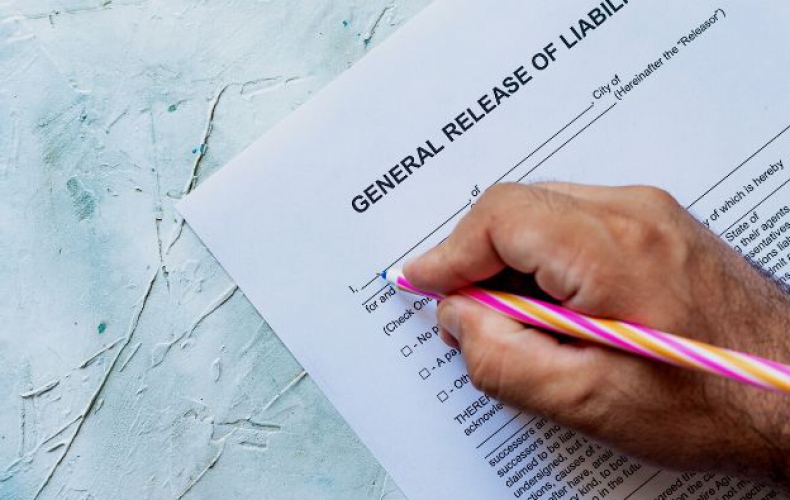Release of Liability Form 101: Essentials, Pitfalls, and the Shift to Digital

Accidents can happen anywhere—from fitness centers and summer camps to car rentals and community events. If you run a business or organize activities where participants face even the slightest risk of injury, a release of liability form is something you can’t afford to overlook.
In this post, we’ll explore:
- What a release of liability form is
- Common mistakes that can make it invalid
- The benefits of moving from paper forms to digital waivers
- How to get started quickly and securely
Whether you’re a small business owner, event planner, or just someone curious about best practices, this guide has you covered.
What Is a Release of Liability Form?
A release of liability form—often called a waiver of liability—helps protect organizations, property owners, or event hosts from certain legal claims if a participant gets injured or experiences a loss during an activity. By signing, the participant confirms they understand potential risks and agree not to hold the organization legally responsible for ordinary negligence.
For example:
- Gyms might require members to sign a form recognizing the risk of injury during workouts.
- Outdoor adventure companies often have participants acknowledge dangers like uneven terrain or extreme weather.
- Car sellers may need a “DMV release of liability” to confirm they’re no longer responsible for incidents involving a vehicle once it’s sold.
The key is clear, concise language that outlines risks, responsibilities, and any safety measures provided by the organizer. While this doesn’t guarantee immunity from lawsuits, a well-crafted form can be a powerful layer of defense.
Common Pitfalls and Mistakes
Even though these forms are commonplace, they can be surprisingly easy to get wrong. Here are a few common pitfalls that can render a release of liability form ineffective:
- Vague or Overly Broad Language
Using generic phrases like “you assume all risks” without specifying the actual risks can create ambiguity. Courts often favor clearer, more explicit language that spells out potential hazards. - Missing Key Elements
Important details—like the participant’s full name, the date, the nature of the activity, or a witness signature (if required)—are sometimes left out. Each missing piece can weaken the legal standing of your form. - Inconsistent or Outdated Forms
Regulations vary by state (and country), and what’s acceptable in one area may not meet requirements in another. Failing to update your forms when laws or regulations change can lead to serious complications. - Improper Storage & Record-Keeping
Let’s face it—paper forms can get lost, spilled on, or forgotten in a filing cabinet. If you can’t produce a signed waiver when you need it, you lose much of its protective value.
Why Go Digital?

For many organizations, the traditional method of printing, signing, and filing forms feels natural—until it starts costing time, money, and peace of mind. This is where digital waivers make a difference.
- Efficiency: Send a link via email or text, and participants can sign on their own device. No more printing stacks of paper or scanning documents.
- Compliance & Security: Digital records are easier to track and retrieve. Systems often come with date-stamped signatures, which helps reinforce the form’s validity.
- Real-Time Updates: Need to adjust your form after a policy change? With online waiver services, you can instantly update all future signings without reprinting anything.
- Better User Experience: People appreciate convenience. Letting them sign from home or on the go reduces friction and speeds up your onboarding or registration process.
How to Create and Manage Your Release of Liability Form Online
- Choose a Reliable Platform
Look for a service that offers built-in templates, customizable fields, and secure storage. You want something user-friendly that streamlines your workflow—especially if you expect high volumes.For example, you can check out [WaiverForever’s online waiver system] - Customize to Fit Your Needs
Tailor the language to reflect the specific risks of your activity or business. Spell out the responsibilities of both parties. If your state has particular requirements (e.g., parental consent for minors), include them. - Make It Legally Sound While digital platforms simplify the process, it’s wise to have an attorney review your waiver language to ensure it meets local legal standards. If you need a head start, check out our template gallery or use our AI waiver template generator to quickly create a draft you can refine with professional guidance.
- Test the User Experience
Send a test waiver to a colleague or friend. Is it easy to open, read, and sign? Does the form clearly highlight risks? A positive experience boosts trust and compliance rates. - Maintain Accurate Records
With an online system, completed forms are stored digitally and often come with search features. This means you can quickly pull up a form if ever needed—even months or years down the line.
FAQs
1. Are electronic signatures legally valid?
Yes. In the United States, the ESIGN Act and UETA recognize electronic signatures as legally binding in most cases. Check your state’s specific regulations for any nuances.
2. Do I still need to keep a physical copy?
It’s typically not necessary. A properly stored digital version is usually enough, provided it clearly shows the date and signature details.
3. What if participants refuse to sign?
If someone won’t sign, you may need to deny their participation. The main purpose of a waiver is to set expectations. If they disagree with the terms, letting them engage in the activity could open you up to liability.
Conclusion: Protect Your Organization, Simplify Your Process
A release of liability form isn’t just paperwork—it’s a proactive measure that can protect both you and your participants. By acknowledging risks and clarifying responsibilities, you foster transparency and trust from the start.
Of course, paperwork can become a chore if you rely on traditional methods. That’s where digital waiver solutions like WaiverForever come in, offering a more efficient, secure, and trackable way to manage the entire process. Whether you’re dealing with hundreds of customers daily or just a handful each month, the right digital tool can save you time and hassle—without compromising on compliance.
Ready to modernize your liability forms? Take the next step: explore how an online waiver platform can streamline your operations, improve participant experiences, and let you focus on what truly matters—running your business or event successfully.